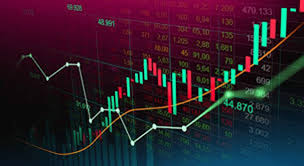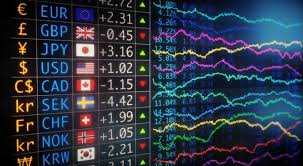Aucun produit dans le chariot.
LegalRoids
Mastering Forex Futures Trading Strategies for Success 1843291282

Mastering Forex Futures Trading: Stratégies de réussite
Forex futures trading is an essential aspect of the global financial market, offering unique opportunities for investors aiming to hedge risk or speculate on currency movements. This article delves deep into the intricacies of Forex futures, providing insights, stratégies, and essential considerations for both novice and seasoned traders. If you are keen to enhance your trading skills, consider resources like forex futures trading islamic-fxtrading.com for tailored advice and insights.
Understanding Forex Futures
Forex futures are standardized contracts that obligate the buyer to purchase a currency and the seller to sell a currency at a predetermined price and date in the future. Unlike spot forex trading, which involves immediate transactions, futures provide the opportunity to enter contracts for delivery at a later date, allowing traders to manage their risk more effectively.
Key Features of Forex Futures
- Standardization: Forex futures contracts are standardized in terms of size, expiration dates, and settlement processes, making them easier to trade on futures exchanges.
- Leverage: Traders can use leverage to control larger positions with a smaller amount of capital, amplifying both potential profits and losses.
- Hedging: Businesses and investors can hedge against currency fluctuations by locking in prices, helping to stabilize cash flows.
- Liquidity: The Forex futures market is highly liquid, meaning that traders can enter and exit positions with ease.
Getting Started with Forex Futures Trading
Embarking on a Forex futures trading journey requires a solid understanding of market fundamentals and trading mechanisms. Here are the steps to get started:
1. Choose a Reputable Broker
Your choice of broker is critical to your success in Forex futures trading. Ensure that the broker is regulated, offers an intuitive trading platform, and provides customer support. Look for brokers who specialize in futures trading and have a range of educational resources available.
2. Develop a Trading Plan
A comprehensive trading plan outlines your trading objectives, risk tolerance, and specific strategies. It should also include guidelines for when to enter and exit positions, and the amount of capital allocated for each trade.
3. Learn the Fundamentals
A strong grasp of economic indicators and global events that influence currency movements is essential. Follow economic news, rapports, and geopolitical developments that could impact the currency markets.
Forex Futures Trading Strategies
Implementing effective trading strategies is crucial for maximizing your success in Forex futures trading. Below are some popular strategies:
1. Trend Following
This strategy involves identifying and following prevailing market trends. Traders use technical analysis tools like moving averages and trendlines to determine the direction of the market and make informed trading decisions.
2. Breakout Trading

Breakout trading focuses on entering a position when the price breaks through a defined support or resistance level. This strategy is based on the premise that once a breakout occurs, the price will continue to move in that direction.
3. Range Trading
In contrast to trend following, range trading involves identifying oscillating currency pairs that have clear support and resistance levels. Traders buy near support levels and sell near resistance levels, aiming to capitalize on price fluctuations within the established range.
Risk Management in Forex Futures Trading
Effective risk management is crucial in Forex futures trading to protect your capital and ensure long-term success. Here are key principles to adhere to:
1. Utiliser les commandes d'arrêt
Implementing stop-loss orders can help limit potential losses on trades. Set your stop-loss at a level where you are comfortable exiting the position if the market moves against you.
2. Diversify Your Portfolio
Diversification across various currency pairs can help mitigate risks associated with market volatility. Avoid putting all your capital into a single trade or currency.
3. Use Proper Position Sizing
Determine the appropriate position size based on your total capital, risk tolerance, and the distance of your stop-loss. This ensures that no single trade can disproportionately affect your trading account.
Analyzing Market Opportunities
Staying informed about market trends and analyzing potential trading opportunities is vital for Forex futures traders. Utilize both technical and fundamental analysis:
1. Technical Analysis
This involves analyzing historical price data and using chart patterns, indicateurs, and oscillators to forecast future movements. Commonly used technical indicators include the Relative Strength Index (RSI), Moving Average Convergence Divergence (MACD), and Bollinger Bands.
2. Fundamental Analysis
Fundamental analysis involves evaluating economic indicators, interest rates, and political events that can influence currency values. Key reports, such as payroll numbers or consumer confidence indices, can provide insights into currency strengths.
Final Thoughts on Forex Futures Trading
Forex futures trading presents exciting opportunities for traders willing to invest time in learning the market dynamics. By developing a solid trading plan, Utiliser des stratégies efficaces, and managing risks, you can enhance your chances of success in this captivating financial arena. Rappelles toi, consistency and patience are key; successful trading is a marathon, not a sprint.
As the Forex futures markets evolve, staying informed and adapting your strategies will ensure you remain competitive and capable of securing profits in this dynamic landscape.
